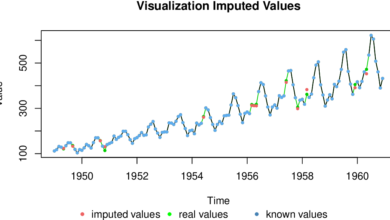Why We Do Stationary Analysis in Time Series Datasets
The Importance of Stationary Analysis in Time Series Datasets

When it comes to the world of data analysis and forecasting, time series data plays a pivotal role. It comprises a sequence of data points collected over time at regular intervals, making it a valuable tool for unraveling trends, making predictions, and solving complex real-world problems. However, before delving deep into the intricacies of time series analysis, it’s crucial to grasp a fundamental concept: stationary analysis. In this article, we will explore what stationary datasets entail and highlight the myriad reasons why performing stationary analysis is indispensable in the realm of time series data analysis.
1. Model Assumptions
Many time series models, such as autoregressive (AR), moving average (MA), and autoregressive integrated moving average (ARIMA) models, hinge on the assumption that the data they operate on is stationary. If this assumption is violated, the predictions and parameter estimates generated by these models can become unreliable, leading to erroneous conclusions.
2. Consistency Over Time
Stationary time series datasets exhibit statistical properties that remain unchanged over time. This constancy simplifies the modeling process and facilitates accurate statistical inferences. In contrast, non-stationary data may contain evolving trends, seasonality, or other patterns that fluctuate over time, posing challenges to modeling and analysis.
3. Prediction Accuracy
Stationary data are inherently more predictable. When data adheres to stationarity, historical patterns tend to persist into the future. This predictability is invaluable for crafting accurate forecasts and making informed decisions.
4. Interpretability
Stationary time series offer stability in their statistical characteristics, enabling easier interpretation of relationships between variables and external factors. Non-stationary data can introduce spurious correlations and complicate efforts to infer causality accurately.
5. Statistical Tests
Stationary analysis often involves the application of statistical tests, such as the Augmented Dickey-Fuller (ADF) test or the Kwiatkowski-Phillips-Schmidt-Shin (KPSS) test. These tests serve to determine whether a dataset exhibits stationarity or non-stationarity, thereby guiding the selection of appropriate modeling techniques.
6. Noise Reduction
Identifying and eliminating non-stationary elements, such as trends and seasonality, from a time series can lead to reduced noise and a clearer focus on the underlying stationary process. This refinement contributes to the creation of more accurate and interpretable models.
7. Forecasting
Stationary data are conducive to accurate forecasting because they demonstrate consistent behavior. Models built upon stationary data tend to deliver more reliable forecasts, underpinning sound decision-making.
8. Risk Management
In domains like finance and economics, where time series analysis is paramount, understanding whether a series is stationary is pivotal for effective risk assessment and decision-making.
9. Policy and Strategy
Non-stationary data can significantly impact policy and business strategy decisions. Careful analysis and comprehension of a dataset’s stationarity properties can empower more informed and strategic choices.
In conclusion, stationary analysis forms a critical cornerstone in the domain of time series data analysis. It ensures that data meets the requisite assumptions for accurate modeling and forecasting, enhances interpretability, and provides a solid foundation for sound decision-making across various sectors, ranging from finance and economics to risk management and strategic planning.
FAQ’s
1. What exactly does it mean for a time series dataset to be “stationary”?
- Answer: Stationarity in a time series dataset signifies that its statistical properties, such as mean and variance, remain relatively constant over time. Essentially, it implies that the data does not exhibit significant trends, seasonality, or other patterns that evolve with time.
2. How can I determine if a time series dataset is stationary or non-stationary?
- Answer: There are several methods to assess stationarity, including visual inspection of plots, statistical tests like the Augmented Dickey-Fuller (ADF) test, and the Kwiatkowski-Phillips-Schmidt-Shin (KPSS) test. These tests examine whether the dataset adheres to the characteristics of stationarity.
3. What are the consequences of using non-stationary data in time series modeling?
- Answer: Using non-stationary data in time series modeling can lead to unreliable predictions and parameter estimates. Models may struggle to capture the underlying patterns, and the results can be skewed by the changing nature of the data, potentially yielding inaccurate conclusions.
4. Are there situations where non-stationary data is preferred or acceptable?
- Answer: Yes, there are cases where non-stationary data is acceptable or even necessary. For instance, in economic and financial modeling, some variables naturally exhibit non-stationary behavior. However, such cases often require specialized modeling techniques, like cointegration analysis, to handle the non-stationarity effectively.
5. What are some common techniques for transforming non-stationary data into a stationary form?
- Answer: Common techniques for achieving stationarity include differencing, where you calculate the differences between consecutive data points, and moving averages, which involve smoothing data using an average over a moving window. Additionally, exponential smoothing methods can be employed to remove seasonality and trends from non-stationary data.





